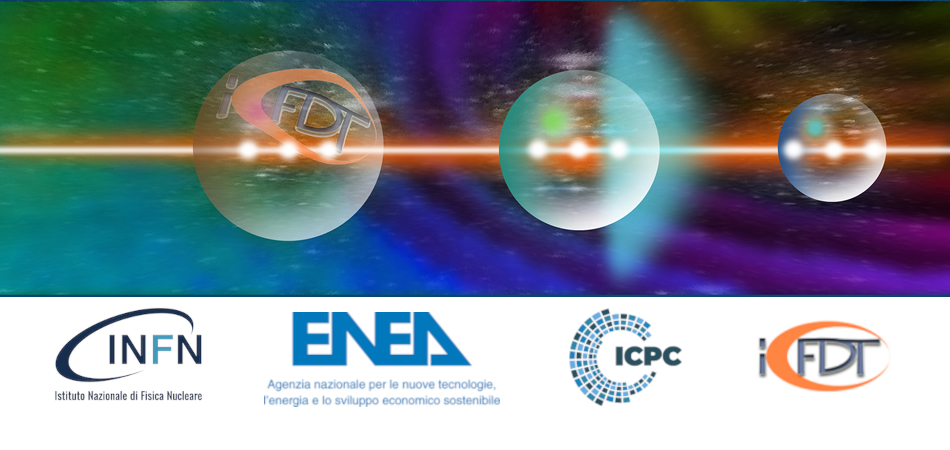Speaker
Description
M.A. Vincenti1,*, R.M. Montereali1,2, E. Nichelatti3, V. Nigro1, M. Piccinini1, M. Koenig4, P. Mabey5, G. Rigon4,6, H.J. Dabrowski4, Y. Benkadoum4, P. Mercere7, P. Da Silva7, T. Pikuz8, N. Ozaki9, E.D. Filippov10, S. Makarov10, S. Pikuz10, B. Albertazzi4
1 ENEA C.R. Frascati, Nuclear Department, Via E. Fermi, 45, 00044 Frascati (RM), Italy
2Present address: V. A. Cassani, 39 00046 Grottaferrata (RM), Italy
3 ENEA C.R. Casaccia, Nuclear Department, Via Anguillarese 301, 00123 S. Maria di Galeria, Rome, Italy
4 LULI-CNRS, Ecole Polytechnique, CEA, Universitè Paris-Saclay, F-91128 Palaiseau Cedex, France
5 Department of Physics, Freie Universität Berlin, Arnimallee 14, 14195 Berlin, Germany
6 Massachusetts Institute of Technology, Cambridge, MA, United States
7 SOLEIL synchrotron, L'Orme des Merisiers, Départementale 128, 91190 Saint Aubin, France
8 Institute for Open and Transdisciplinary Research Initiatives, Osaka University, Osaka 565-0871, Japan
9 Graduate School of Engineering, Osaka University, Osaka 565-0871, Japan
10 Joint Institute for High Temperature RAS, Moscov 125412, Russia
*Corresponding author: aurora.vincenti@enea.it
Pure and doped lithium fluoride (LiF) crystals and thin films are extensively investigated as imaging detectors of ionizing radiations (X-rays, -rays, protons, neutrons, electrons, etc.), based on the optical reading of visible photoluminescence (PL) emitted by stable radiation-induced F2 and F3+ colour centres (CCs) [1]. These aggregate CCs (two electrons bound to two and three close anionic vacancies, respectively) possess almost overlapped absorption bands peaked at 444 and 448 nm, respectively. Under optical excitation in the blue spectral region, they simultaneously emit broad PL bands peaked at 678 and 541 nm, respectively, which can be read in non-destructive way by using fluorescence microscopy. The growing interest in these passive radiation detectors is due to their promising properties such as high intrinsic spatial resolution over a large field of view, wide dynamic range and simplicity of use, as they are insensitive to ambient light and do not require development or chemical processing.
Optically-transparent polycrystalline LiF films (thicknesses of 0.5, 1.1 and 1.8 µm) were grown by thermal evaporation on Suprasil®, glass and Si(100) substrates at ENEA C.R. Frascati. They were irradiated at several doses with monochromatic X-ray beams of energy 7 and 12 keV at the METROLOGIE beamline of the SOLEIL synchrotron at Saint Aubin (France). After irradiation, their PL response, carefully investigated by using a fluorescence microscope, showed a linear behaviour as a function of the irradiation dose. This linear dose-response function [2] is a highly desiderable features for a quantitative analysis of the fluorescence images obtained in edge-enhancement imaging experiments, performed by interposing an Au mesh, 400 lpi, at a distance of 15 mm from the samples, which allowed estimating a spatial resolution of (0.38 ± 0.05) µm.
Acknowledgments
Research carried out within the TecHea (Technologies for Health) project, funded by ENEA, Italy.
[1] J. Nahum, Phys. Rev. 158 (1967) 814.
[2] M.A. Vincenti et al., Opt. Mater. 119 (2021) 111376.

